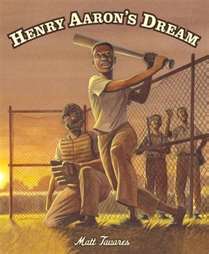To balance the First Day Anxiety post, these selections build up excitement for the first day of school! The first two are specific to kindergarten, but the last two have a general “back to school” theme.

The countdown has begun: School starts in one week! Each day, enthusiasm for kindergarten is built up as the child thinks about what she will learn (counting, writing, letters) and what she will experience (show & tell, making friends, playing games). The narrative is written in a lively poetic form with rhyming words and other sound devices foundational for early reading skills. In addition, the days of the week, numbers, and counting backwards are reviewed seamlessly in the narrative. The pictures exude imagination and energy as the child goes through her daily activities in preparation for the big day, doing things like counting, observing, and packing up. Kindergarten Countdown focuses on all there is to anticipate as the school year approaches, offering listeners an opportunity to share what they look forward to learning and to doing.

Using the famed “’Twas the Night Before Christmas” poem model, Wing builds anticipation for the first day. The narrative begins with both a boy and a girl making preparations for the big day. Once they fall asleep, “visions of school supplies [dance] in their heads.” Next, the pictures show scenes from a typical morning and end with “kids [posing] for pictures with eyes sparkling bright.” There is lots of zest as parents bring their children into the classroom and, then, observe them playing and singing. The children are adjusting well, but the parents are a different story:
When what to her wondering eyes
should appear
but sad moms and dads
who were holding back tears!
Their noses—so sniffly!
Their eyes---red and wet!
This was the saddest good-bye
Miss Sunrise had seen yet!
The children give their parents a final hug before they leave. Young listeners will enjoy this entertaining reversal while being assured that school will be a positive experience. I recommend The Night Before Kindergarten as a First Day Eve read.

Ivy Green, along with her peers, is preparing for school by buying new shoes and purchasing school supplies. Meanwhile, the school workers (custodian, teacher, principle, bus driver) are seen preparing for the children’s arrival. Next, the night time routines are shown of the school workers and Ivy. As they fall into a slumber, their dreams illustrate their first day fears. Finally, the day arrives, and everything runs smoothly. First Day, Hooray! is unique because it reveals how each person has a part in making the school day successful, urges children to see things through the perspectives of others, and assures them that they are not the only ones with anxiety and preparations. It ends on the assumption that school is something to savor and to enjoy.

Nicholas and his father go into town for school preparations—hair cut, school supplies, shoes—and for some last minute summer fun. They meet various friends who share their experiences preparing for the new school year as well as their concerns when they started last year. Each situation ends with humor and/or optimism. As the day comes to a close, Nicholas cannot wait for his new year to begin! The illustrations are vivid and animated. Rockwell’s First Day of School is remarkable because it focuses on older children sharing their experiences and eagerness which can be comforting to younger listeners looking to their peers for solace.
































.jpg)





